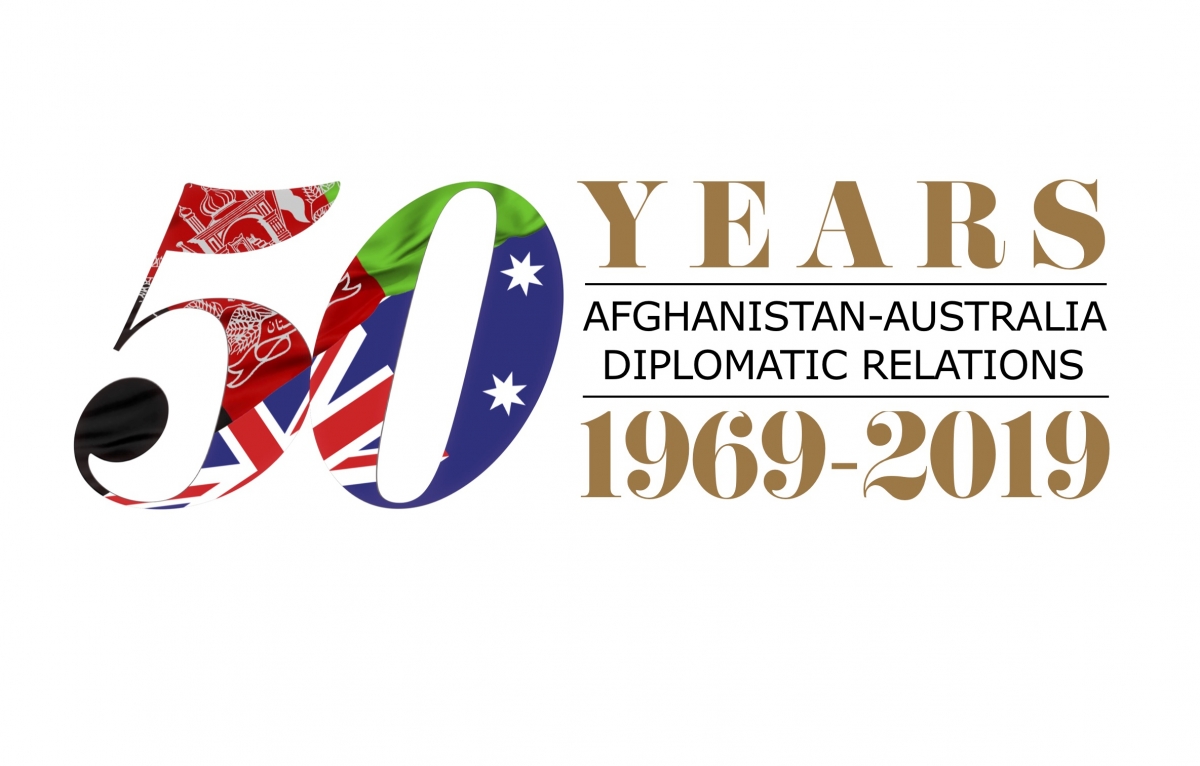Celebrating 50 years of Afghanistan-Australia Diplomatic Relations

On this momentous occasion, we are celebrating 50 years of bilateral relations between the Islamic Republic of Afghanistan and the Commonwealth of Australia. The 50th anniversary of Afghanistan-Australia relations will be marked by a series of activities, visits and a creative celebratory agenda.
Australia and Afghanistan share a friendly and long-standing relationship which can be traced back as far as the 1860s when Afghan cameleers came to Australia to contribute to the carriage of explorers and assistance in transportation for the wool and mining industry.
During their inland travels, they played a key role in the construction of the Overland Telegraph Line; the Queensland Border Fence; the Transcontinental Railway; the Rabbit Proof Fence; and the Canning Stock Route. Several cameleers also formed a kinship with Indigenous Australians, with some agreeing to carry traditional goods such as red ochre and the pituri plant across ancient trade routes. Others provided a necessary lifeline of sugar, tea, tobacco, clothing and metal tools to remote outback communities. While their legacy of building outback Australia is rarely spoken of, several remnants remain behind – 1,140 Aboriginal and Torres Strait Islander Australians identify themselves as Islamic-Indigenous; while the train between Adelaide and Darwin (The Ghan) has been named in their honour.
Following the Cameleer era, the first diplomatic link between Australia and Afghanistan was established on 30thMarch 1969, when Mr L. H. Broder, concurrently High Commissioner in Pakistan and resident in Rawalpindi, presented his credentials as the Australian Ambassador to Afghanistan. While on the 7thMarch 1975, the Governor-General of Australia, Sir John Kerr visited Kabul as the first head of state to strengthen bilateral relations through mutual experiences in education, agriculture, and other small means of material assistance.
For the first time in the history of Afghan-Australia relations, Afghanistan opened an honorary Consulate in Canberra with jurisdiction throughout Australia in October 1994. While this
led to the successful establishment of the first resident formal link between the two countries,
the consulate was forced to close shortly afterwards due to civil unrest.
Following the terrorist attacks against the United States on 11 September 2001, Former Australian Prime Minister John Howard invoked Article IV of the ANZUS Treaty. This would subsequently result in the commitment of Australian military assets and personnel to the US-led Coalition against Terrorism operations in Afghanistan. By November 2002, Australian forces had shifted their objectives in Afghanistan from combat-related missions to reconstruction activities through the provision of $54 million in humanitarian aid, military liaison through the United Nations Assistance Mission in Afghanistan, and a contribution to the United Nations Mine Clearance Training Team. After an interval in consulate operations in Canberra, Afghanistan and Australia were able to re- establish diplomatic representation through Australia’s High Commissioner to Pakistan
At its peak, Australia was contributing 1,550 ADF personnel to reconstruction efforts within Afghanistan until former Australian Prime Minister, Julia Gillard, announced an early withdrawal of troops in 2012. In total, more than 25,000 Australian soldiers served in Afghanistan over a decade of operations. Australia saw the unfortunate loss of 42 deaths and 261 injuries of Australian soldiers, alongside the deaths of 100 thousand Afghans.
Afghanistan’s people appreciate Australia’s assistance to the country since 2001, which has been instrumental for economic development and humanitarian assistance. Australia has been an indispensable partner in the international community’s engagement for a secure and stable Afghanistan. To date, Australia remains committed to a stable and secure Afghanistan and continues to support the NATO-led train, advise and assist mission known as Resolute Support as part of Operation Highroad through the deployment of around 3000 ADF members from the Royal Australian Navy, the Australian Army, the Royal Australian Air Force and Defence civilians.
Our tributes to the 42 Australians who have paid ultimate sacrifice in the war against international terrorism in Afghanistan. By sacrificing their blood, they have created a bond that will never vanish from our memory or our collective consciousness. We thank the 25,000 Australian men and women in uniform who served in our nation. They have made a big difference by joining us in frontline of defence of freedom and a guard against spread of terror and extremism.
Today, Australia has provided generous assistance of over a billion dollars, which has made an enormous difference to the conditions of children and women, and to the opportunity provided to our youth. We continue to share a friendly a long-standing relationship through continued engagement in security and development cooperation, and economic reform through bilateral, regional and multilateral dialogues. In addition, several students from Afghanistan continue to study in Australian universities, which will significantly enhance Afghanistan’s reconstruction. While our successful endeavours in cricket continue to play a unique role in shaping and showcasing Afghanistan’s and Australia’s identity, values, and culture.
Australia’s love, dedication, and commitment to Afghanistan is a true inspiration for everyone. As we commemorate this momentous anniversary; let us take this moment now to reflect upon our flourishing relationship and safeguard its strength for generations to come.


Last modified on Friday, 02/08/2019

